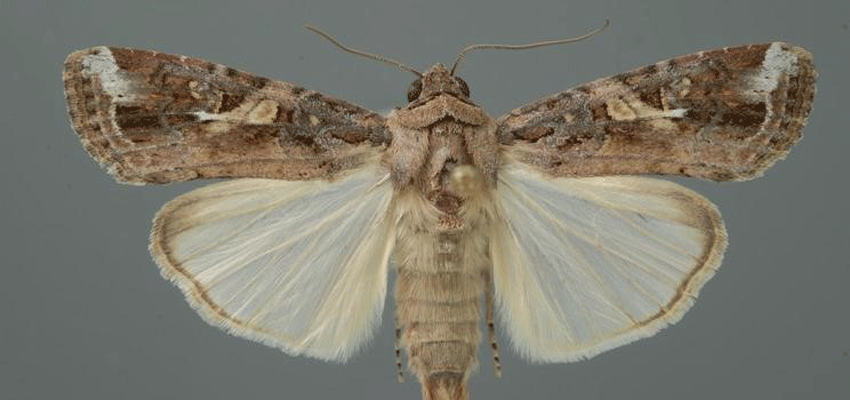AUTHORITIES are battling to defend northern Australian from an incursion by fall armyworm moths in the Torres Strait.
Fall armyworms can damage economically important grasses such as maize, rice, sorghum, sugarcane and wheat, as well as to other horticultural crops and cotton.
Head of Biosecurity at the Department of Agriculture, Water and the Environment, Lyn O’Connell, said the caterpillar stage of the fall armyworm, also known as Spodoptera frugiperda, damages many crops across Africa and Asia vital to human food security, such as rice, maize and sorghum.
“Fall armyworm is a serious agricultural pest. The larval or caterpillar stage of the fall armyworm can feed on a wide variety of crops causing large economic loss, and it has the potential to impact on our native and garden plants,” Ms O’Connell said.
“Biosecurity threats to Australia such as fall armyworm are very real—they threaten our industries and they threaten our way of life.”
Ms O’Connell said the Australian Government was working closely with the Queensland government and with industry groups and communities to respond to this significant threat.
“We are also working closely with our counterparts in Timor-Leste and Papua New Guinea to help assess the situation there, and to offer assistance where it may be needed,” she said.

Queensland agriculture minister Mark Furner said the discovery of fall armyworm showed how critical it was for everyone to play their role in protecting Queensland’s critical agricultural production and environment.
“Those industries support thousands of Queensland jobs so it is vital that we work together to ensure it is eradicated,” Mr Furner said.
“Biosecurity Queensland is working with other Australian governments and industry groups to manage the threat posed by fall armyworm and respond appropriately.”
Biosecurity Queensland general manager plant biosecurity and product integrity Mike Ashton said fall armyworm had been found on Erub and Saibai islands.
“The Northern Australia Quarantine Strategy have advised Biosecurity Queensland that seven specimens of the pest were found in late January in traps set on the islands,” Mr Ashton said.
He said fall armyworm larvae were most active during late summer and early autumn, but may be active year-round in tropical areas.
“Fall armyworm larvae are light coloured with a larger darker head. As they develop, they become browner with white lengthwise stripes and also develop dark spots with spines,” Mr Ashton said.
“Adult moths are 32 to 40mm in length wing tip to wing tip, with a brown or grey forewing and a white hind wing.
“Male fall armyworm adults have more patterns and a distinct white spot on each of their forewings.”
Mr Ashton said fall armyworm was first detected outside its native range in early 2016 and had spread to Africa, the Indian subcontinent, China and Southeast Asia.
“The pest is a strong flier and is believed to have covered most of its geographical range through natural dispersal but can also be spread through the movement of infested plant material,” he said.
Those with information are encouraged to report any unexpected symptoms in the field by phoning the Exotic Plant Pest Hotline on 1800 084 881.

